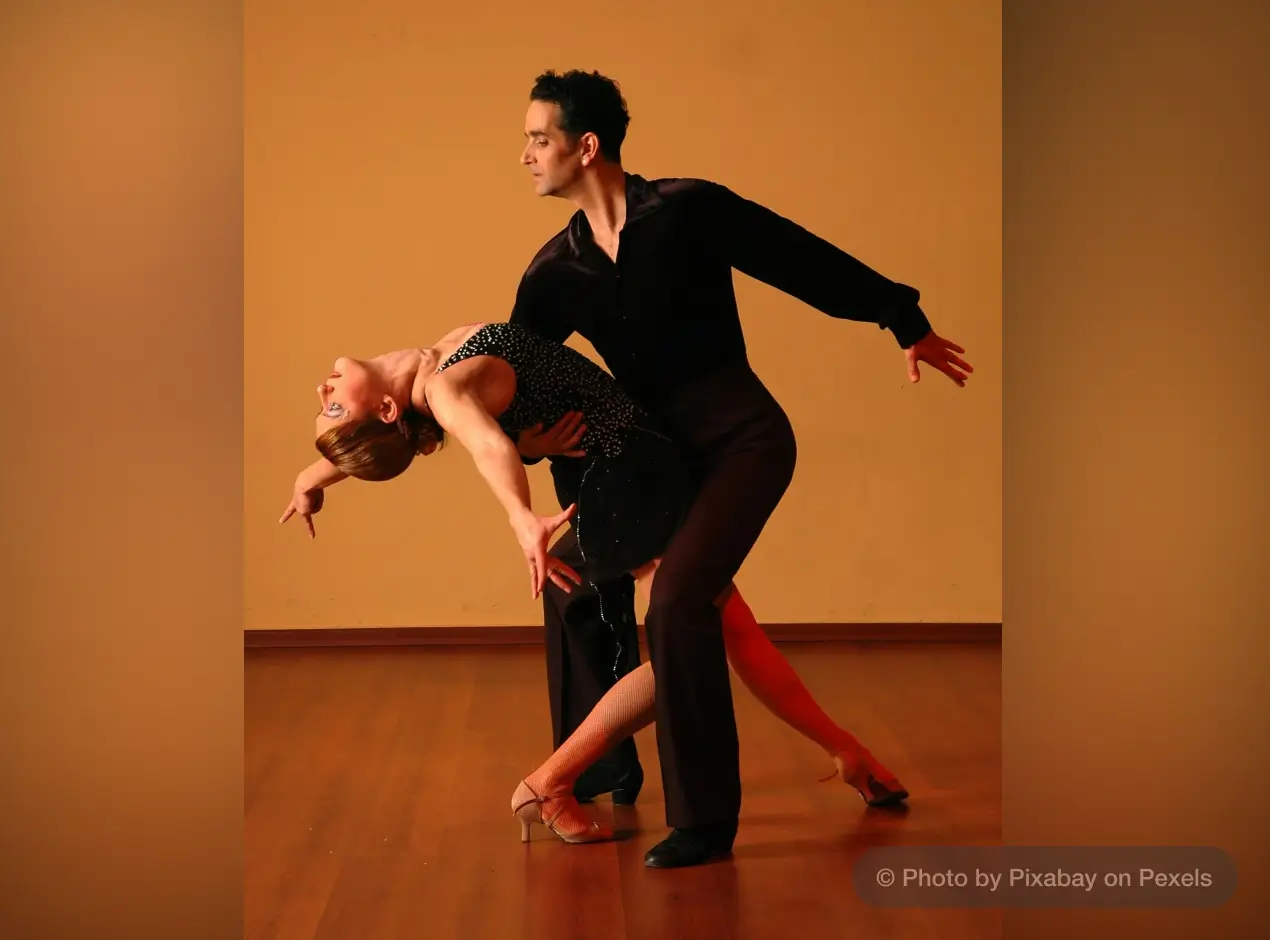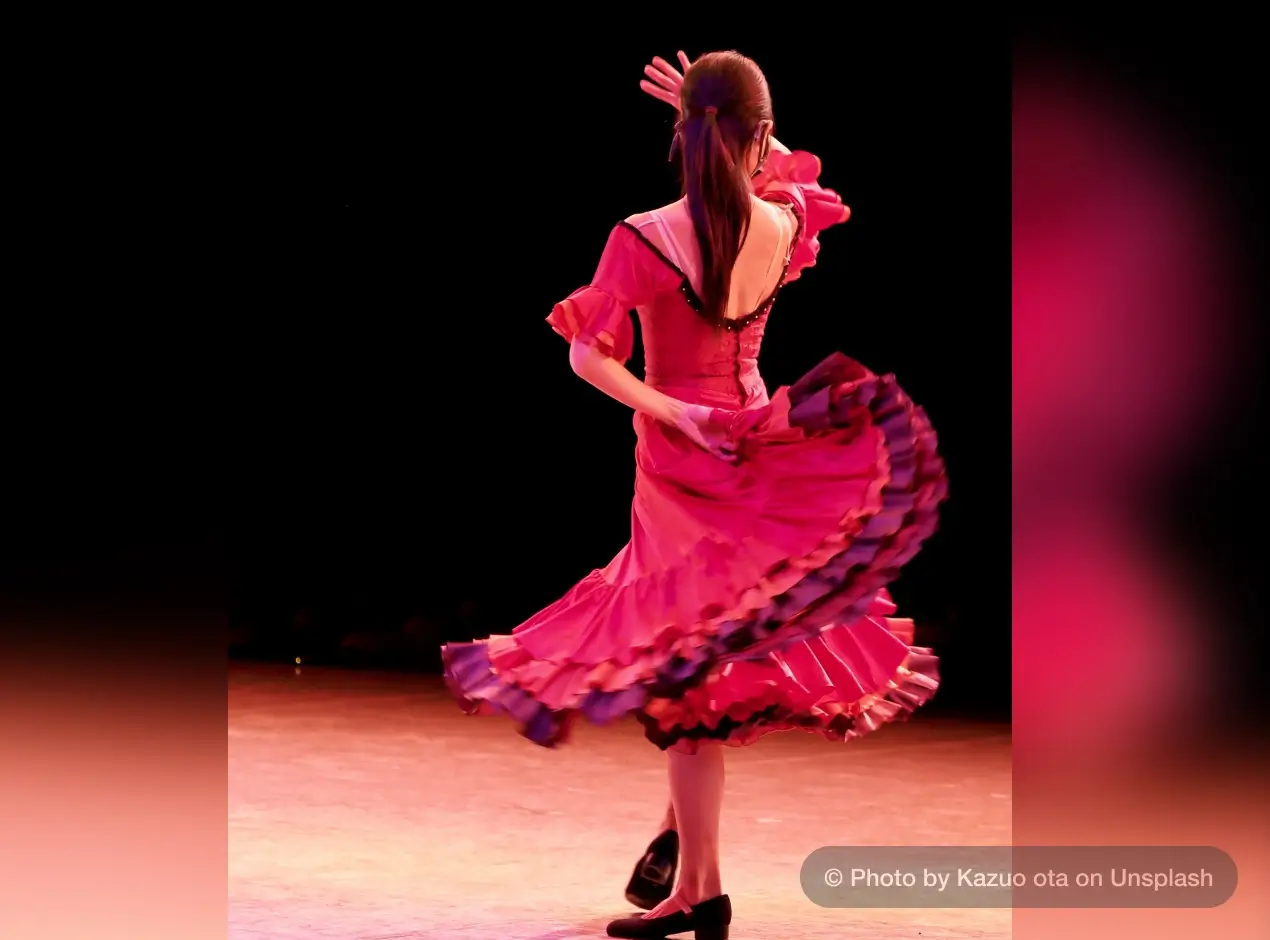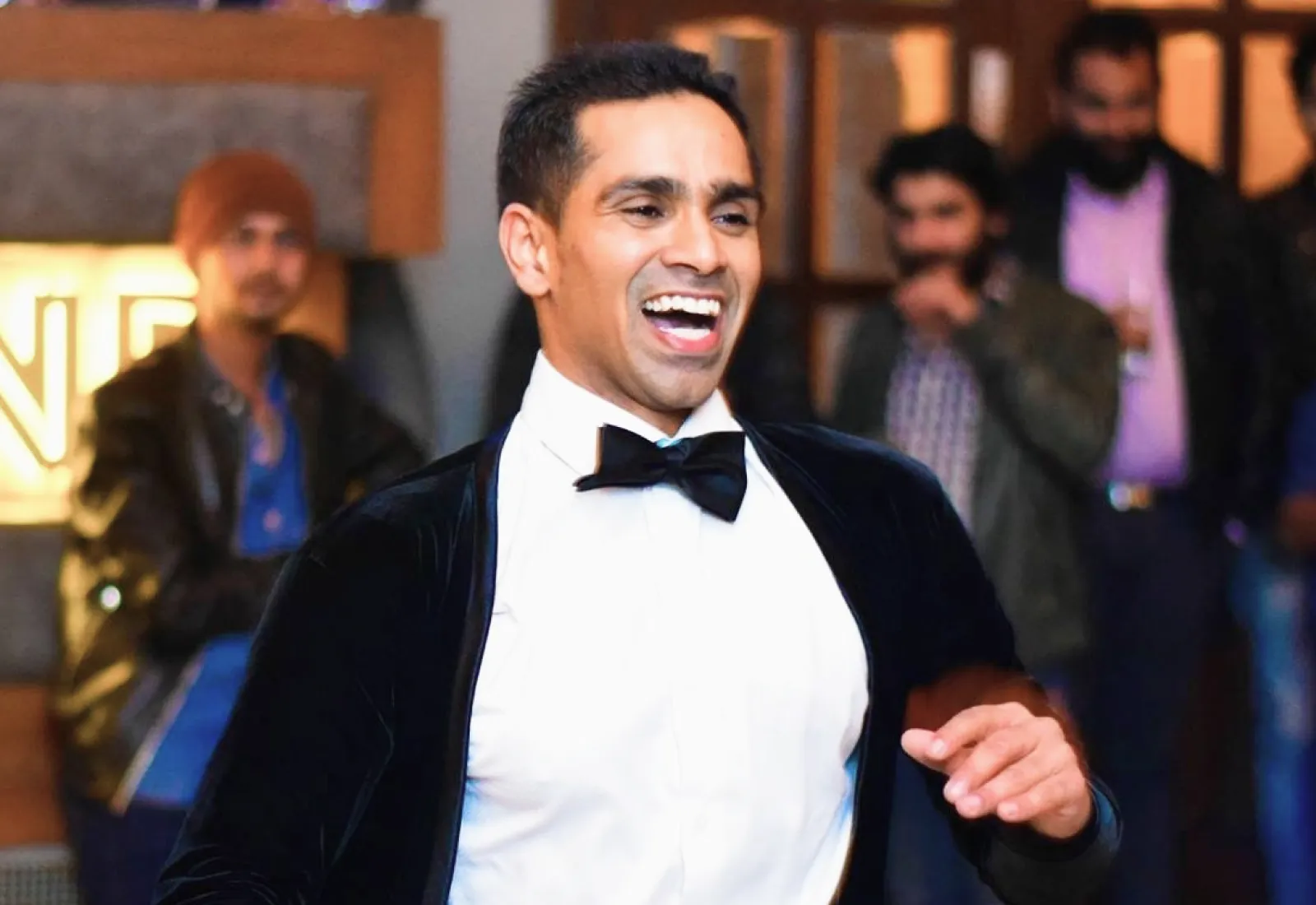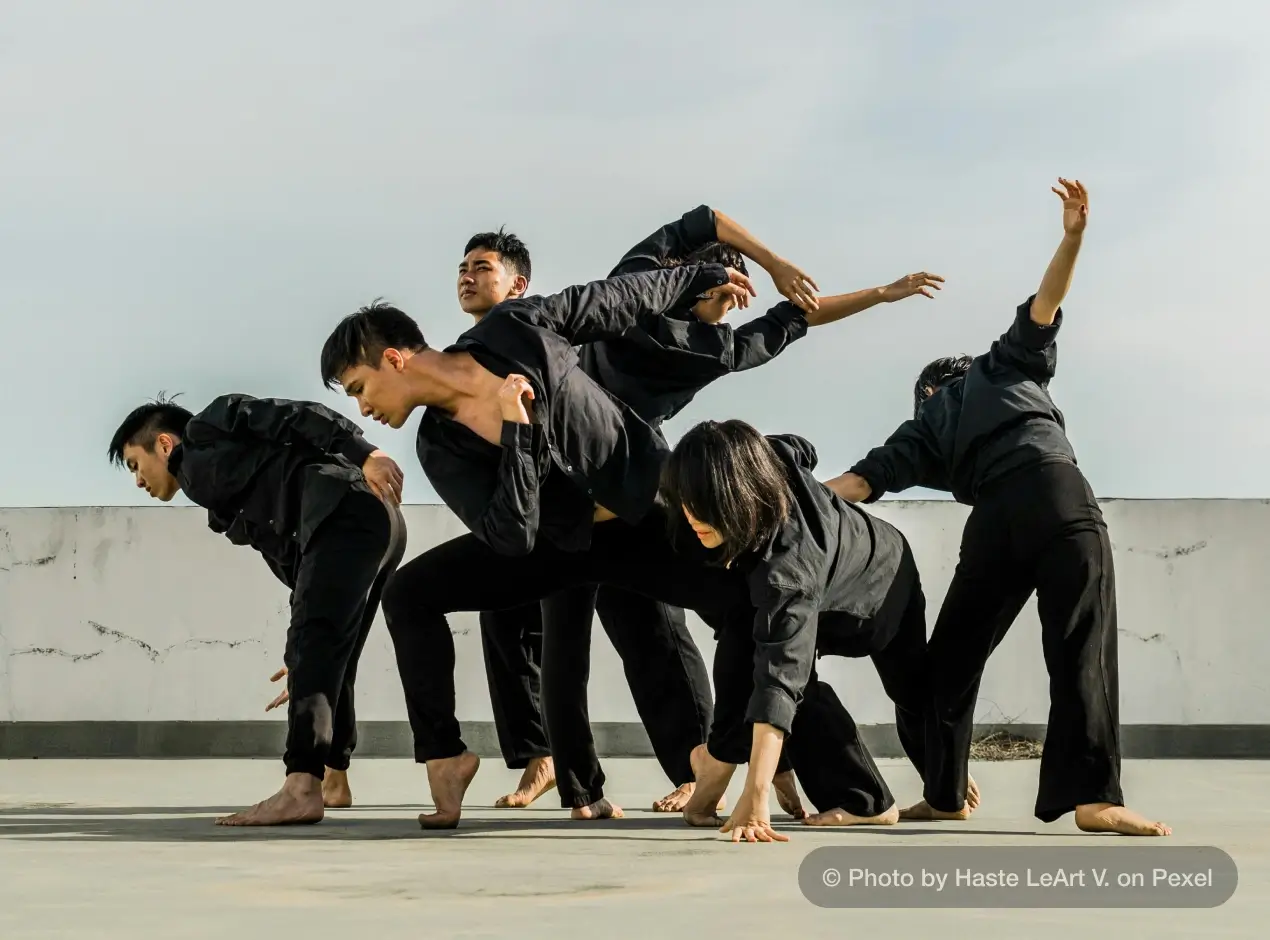Overview
Salsa dance is one of the liveliest dance forms. It is a Latin dance form and is an outcome of several dance forms such as Manbo, Rumba, and Pachanga. The essence of salsa dance lies in its vibrant energy, rhythmic complexity, and deep cultural roots.
It radiates excitement and enthusiasm, with dancers sharing an engaging vibe through their expressions and dance movements. The dance is a celebration of life and human connection.
Salsa is driven by its lively and infectious rhythm. The music is infectious with syncopated beats and a fast tempo, creating an irresistible urge to groove. The dancers' steps and movements are tightly interwoven with the music's rhythm, making timing and musicality crucial.
Being a partner dance, Salsa emphasizes connection and interaction between the leader and the follower. This connection can be physical, through hand holds and body contact, and at the same time non-verbal, through eye contact and subtle cues. The dynamic between partners creates a fluid and responsive dance experience.
It's a social activity that fosters community and connection. Salsa events, whether in dance clubs or informal gatherings, bring people together. It encourages social interaction, making it a powerful tool for building friendships and communities.

Salsa Dance History
Early 20th Century
Salsa dance has a rich history. Where did Salsa dance originate from? It began in the Caribbean, especially in Cuba and Puerto Rico in the early 20th century. Several factors influenced the development of salsa dance in Cuba and Puerto Rico.
1. African Rhythms: The influence of African rhythms was profound. Enslaved Africans brought their music and dance traditions to the Caribbean. These rhythms were characterized by complex percussion patterns, which became a fundamental part of salsa.
2. Spanish Melodies: Spanish colonization introduced European musical elements to the Caribbean. Spanish guitar and vocal styles blended with African rhythms, creating a unique musical fusion that laid the groundwork for salsa.
3. Cuban Son: Son is a genre of music and dance that originated in Cuba in the late 19th century. Cuban son played a crucial role in the creation of salsa music. When Cuban and Puerto Rican musicians brought their music to New York City in the mid-20th century, they combined elements of son with other Latin and jazz styles. This fusion led to the development of salsa, which retained the rhythmic complexity and danceable qualities of Son while incorporating new influences.
4. Rumba and Mambo: Other Cuban genres, like rumba and mambo, also played crucial roles. Rumba's complex rhythms and expressive movements contributed to salsa's dance style. Mambo introduced a faster tempo and more elaborate dance patterns.
5. Puerto Rican Bomba and Plena: In Puerto Rico, bomba and plena were important influences. Bomba featured drumming and call-and-response singing, while plena was known for its narrative lyrics and percussion. These styles added to the rhythmic diversity of salsa.
6. Cultural Exchange: The Caribbean has always been a melting pot of cultures. The constant exchange of musical ideas among African, Spanish, and indigenous cultures enriched salsa. Festivals, social gatherings, and religious ceremonies provided platforms for this cultural exchange.
These influences combined to shape salsa into a dynamic and diverse dance form. They contributed to its rich rhythms, expressive movements, and vibrant energy, making salsa a globally loved dance today.
Migration to New York City
The migration of Cuban and Puerto Rican musicians to New York City in the mid-20th century was pivotal for the development of salsa. These musicians brought their rich Caribbean sounds with them. In New York, they encountered jazz and other musical styles. This mix created a vibrant and dynamic music scene. The city's urban environment encouraged innovation and experimentation. Musicians began blending traditional rhythms with new influences. They added jazz elements and other diverse sounds. This fusion of styles led to the birth of salsa. New York became a melting pot where salsa evolved. It grew into the lively, energetic dance and music we know today.
Today, salsa is a global phenomenon. There are many different styles, like Cuban, New York, and Los Angeles. Each style has unique moves and techniques. Salsa is taught in dance schools worldwide. It is performed in competitions and social events. The essence of salsa remains the same. It is a joyful and energetic dance that connects people.
Also, read - 10 Basic Hip-hop Dance Moves Every Dancer Must Kno
Unique Features of Salsa Dance
The word ‘Salsa’ was used for a spicy sauce in Spansh. In 1960, Latin music became very popular in New York. At that time a very influential musician Jonney Pacheco, also the co-founder of Fania Records coined the name "salsa" for this Latin dance and music form.
The dance style bore the essence of the sauce it was named after in its spicy, flavorful, and lively nature of the music and dance. It encapsulated the blend of various musical styles and rhythms that make up salsa, much like a sauce that blends different ingredients to create a rich and complex flavor. The name quickly caught on and became widely accepted as the genre gained popularity globally.
Here are some of the key elements that define Salsa dance -
Rhythmic Patterns
The rhythm of salsa dance is lively and energetic. It is based on a quick tempo, usually in 4/4 time. The basic step pattern is often counted as "1-2-3, 5-6-7." There is a pause or subtle shift on the fourth and eighth beats. This gives salsa its distinctive, syncopated rhythm. The music features strong, repetitive beats that make you want to move. Percussion instruments like congas, bongos, and timbales play a key role. They create the driving force behind the dance. The rhythm is infectious and keeps dancers in sync with the music. This vibrant beat is what makes salsa dance so exciting and fun.
Partner Connection
Though Salsa can be danced by solo performers, it is usually danced with a partner. One person leads, and the other follows. The leader guides the follower through different moves. This connection can be close or open. In a close connection, partners hold each other tightly. In an open connection, they hold hands lightly. Good communication between partners is key. They use gentle pushes and pulls to signal steps. Eye contact also helps them stay in sync. This connection makes the dance smooth and coordinated. It allows for exciting turns and spins. The partner connection is what makes salsa a fun and interactive dance.
Turns and Spins
Turns and spins are a big part of salsa dance. They add excitement and flair. Both the leader and follower perform turns and spins. The leader uses gentle signals to guide the follower. These signals can be a slight push or pull. The follower needs to respond quickly and smoothly.
Basic turns start with simple steps. As dancers improve, they learn more complex spins. Single and double spins are common. Some advanced dancers do multiple spins in a row. Turns and spins need good balance and timing. They must stay in sync with the music's rhythm.
Turns and spins make salsa dynamic and fun. They create a lively and energetic dance experience. These moves also show off the dancers' skills and coordination.
Footwork
Salsa footwork is intricate and lively. Dancers use quick, precise steps, often incorporating syncopated rhythms.
The footwork in salsa dance follows the rhythmic pattern of "1-2-3, 5-6-7," with pauses on the fourth and eighth beats. Dancers shift their weight from one foot to the other.
The basic step starts with a forward step, followed by a backward step. Side steps and crossing steps are also common. Dancers keep their movements small and precise. This makes the dance look smooth and controlled.
Footwork can become more complex with practice. Advanced dancers add taps, kicks, and spins. Footwork must match the rhythm of the music. Keeping in time with the beat is very important. Good footwork makes the dance look effortless and flowing. It also allows for creative expression within the dance.

Hip Movement
Just like the rhythm and the footwork, the other significant feature of Salsa dance is the hip movement. It adds sensuality to the dance moves. In salsa, dancers move their hips in a fluid and natural way, keeping up with the beats and the footwork. The movement is often circular or side-to-side. Hips sway with the music's beat, accentuating the rhythm.
Hip movement in salsa is subtle yet expressive. It complements the footwork and enhances the overall dance style. Dancers use their hips to create a sense of flow and connection between steps. It adds a sensual and dynamic element to the dance.
Learning to control hip movement takes practice. Dancers engage their core muscles to achieve smooth and controlled hip motion. This helps them maintain balance and coordination while dancing. Hip movement in salsa dance allows dancers to express themselves and interpret the music's rhythm with creativity. It is a key component of salsa's vibrant and engaging dance style.
Creative Freedom
Keeping the basic steps of Salsa dance intact, the dance also allows individual expression and styling. Dancers often add nuances and flair on their own through hand and arm movements, body rolls, and other embellishments.
Salsa is a partner dance that allows the scope for bringing out creativity where one partner gives the queue and the other reacts to it and follows it. It helps to portray a unique chemistry and camaraderie that makes the performance more engaging.
Music and Instrumentation
The music in salsa dance is vibrant and rhythmic, driving the dance movements. Salsa music typically features a variety of instruments that create its distinctive sound. Percussion instruments like congas, bongos, and timbales provide the rhythmic backbone of the music, with their lively beats and syncopated patterns. These instruments create a dynamic and energetic atmosphere that inspires dancers to move in sync with the tempo.
In addition to percussion, salsa music often includes brass instruments such as trumpets and trombones, which add richness and depth to the sound. The piano plays a crucial role in salsa music, providing melodic lines and rhythmic accents that complement the percussion. Bass instruments like the bass guitar or double bass provide the foundation, anchoring the music with deep, resonant tones.
The arrangement of instruments in salsa music is carefully orchestrated to create layers of sound and texture. The interplay between percussion, brass, piano, and bass creates a lively and complex musical landscape that dancers respond to with their movements. Salsa music is known for its infectious rhythm and catchy melodies, making it irresistible for dancers and listeners alike. Whether played by live bands or recorded by DJs, salsa music sets the mood and energy for salsa dance, making it a dynamic and joyful experience.
Social Aspect
The social aspect of salsa dance is central to its appeal and enjoyment. Salsa is not just a dance; it's a way for people to connect and interact. Social salsa events, such as dance clubs, parties, and salsa nights, provide opportunities for dancers to come together in a fun and vibrant atmosphere. These events are inclusive and welcoming, allowing people of all ages and backgrounds to participate.
At salsa socials, dancers often rotate partners throughout the night. This encourages social interaction and helps dancers improve their skills by dancing with different people. Salsa fosters a sense of community and camaraderie among dancers, creating friendships and connections that extend beyond the dance floor.
The social aspect of salsa also promotes cultural exchange. People from diverse backgrounds come together to share their love for salsa music and dance. It's common to see people from different countries and cultures dancing together, united by their passion for salsa.
Moreover, salsa socials often feature live bands or DJs playing energetic salsa music. The lively beats and rhythms create an infectious energy that keeps dancers engaged and excited throughout the event. Whether dancing with friends or meeting new people, salsa socials provide a joyful and uplifting experience that brings people together in celebration of music and movement.
Different Styles of Salsa Dance
Over the years, as the dance form spread globally, the local culture and traditions left marks on it and contributed to its evolution process. As a result, Salsa dance diversified into different styles through a combination of cultural exchanges, geographic influences, and individual creativity.
Cuban Salsa (Casino)
Cuban salsa, also known as "Casino," originated in Cuba. It evolved from the Cuban son, incorporating Afro-Cuban rhythms and dances like rumba and mambo. Cuban salsa is characterized by its circular motion, where dancers move around each other in a circular pattern rather than a linear one. The dance often includes complex arm movements and intertwined partner moves, reflecting its African and Spanish influences.
New York Style (Mambo On 2)
New York-style salsa, also known as "Mambo On 2," developed in the 1960s and 1970s in New York City. Influenced heavily by Puerto Rican dancers and musicians, this style places a strong emphasis on timing and musicality. Dancers break on the second beat of the music, giving it a smooth and elegant feel. New York-style salsa often features intricate footwork, quick spins, and a close connection between partners. It is deeply influenced by jazz and big band music, which were popular in New York at the time.
Los Angeles Style (On 1)
Los Angeles-style salsa, or "On 1," emerged in the 1990s. It is known for its flashy and theatrical moves, influenced by Hollywood's entertainment industry. Dancers break on the first beat of the music, giving it a dynamic and energetic feel. LA style often includes acrobatic lifts, dips, and tricks, making it visually impressive. This style emphasizes performance and is popular in salsa competitions and shows.
Colombian Salsa (Cali Style)
Colombian salsa, or "Cali Style," originated in Cali, Colombia, known as the "Salsa Capital of the World." This style is characterized by its fast footwork and quick, intricate steps. Dancers often use rapid, short steps that match the fast-paced salsa music popular in Colombia. The dance style is less about partner connection and more about individual footwork and agility.
Rueda de Casino
Rueda de Casino is a group dance style that originated in Cuba. In this style, multiple couples dance in a circle, following the calls of a leader. The leader calls out moves, and dancers switch partners in a synchronized manner. This style is social and community-oriented, emphasizing group coordination and fun.
Evolution and Spread
As salsa music and dance spread globally, local cultures and dancers added their own influences, leading to further diversification. Salsa clubs, international festivals, and dance schools played significant roles in spreading these styles worldwide. Technology, such as the internet and social media, also helped share different styles and techniques, allowing salsa to evolve continuously.
Each salsa style reflects the unique cultural and musical influences of its place of origin, contributing to the rich diversity of salsa dance we see today.
Popular Salsa Dancers
Some dancers have not only excelled on the dance floor but have also contributed to the growth and evolution of salsa dance through their performances, teachings, and innovations.
Eddie Torres
Eddie Torres, known as "The Mambo King," is one of the most influential figures in salsa dance. He is credited with popularizing the New York style, or "On 2" salsa. Eddie's smooth, elegant style and precise technique have inspired countless dancers. He has also been a dedicated teacher, training many of today’s top salsa dancers and choreographers.
Johnny Vazquez
Johnny Vazquez, often called "The Prince of Salsa," is a leading figure in the Los Angeles style salsa scene. Known for his dynamic and theatrical dance moves, Johnny has won numerous international salsa championships. His unique blend of acrobatics, intricate footwork, and charismatic performances have made him a global salsa star.
Frankie Martinez
Frankie Martinez is renowned for his innovative approach to salsa dance. He blends elements of Afro-Cuban dance, jazz, and other styles to create a unique and expressive form of salsa. Frankie is celebrated for his improvisational skills and deep musicality, often pushing the boundaries of traditional salsa dancing.
Arsh Singh
Arsh Singh is a known face in the salsa community across the world. He has represented India in several festivals and dance championships, including the “World Latin Dance Cup” and the “World Salsa Summit.” held in Miami every year. He has also performed along with several world-known figures in the Salsa community like Alien Ramirez, and Adriano, and Samantha, and has won several World Championship Titles since 2015. His knowledge of salsa is influenced by the Core Cuban community.
Jhesus Aponte
Jhesus Aponte is a Puerto Rican salsa dancer known for his technical prowess and artistic flair. He has won multiple world salsa championships and is recognized for his precise footwork and graceful movements. Jhesus is also a respected choreographer and instructor, contributing significantly to the salsa dance community.
Magna Gopal
Magna Gopal is a renowned salsa dancer known for her exceptional lead and follow skills, making her a standout in a traditionally gendered dance role. She is celebrated for her versatility, musicality, and ability to improvise effortlessly. Magna is also a sought-after instructor, known for her clear and engaging teaching style.









